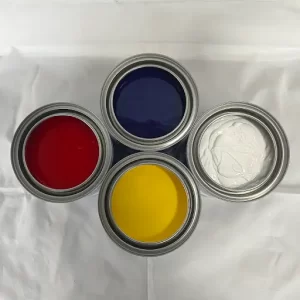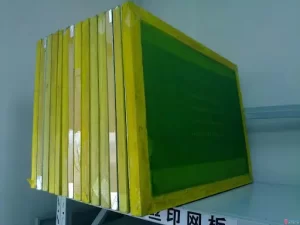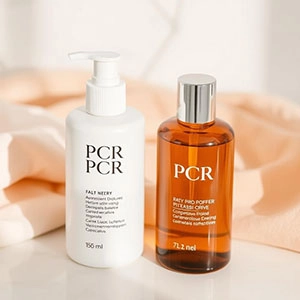Factors Affecting Color Changes in Silk Screen Printing for Cosmetic Packaging
Content Menu
>> The Silk Screen Printing Process
>> Factors Affecting Color Changes
>>> 1. Ink Blending
>>> 5. Ink-Return Knife Settings
>>> 8. Light Source
>> Conclusion
Silk screen printing is a widely used graphic printing process in the manufacturing of cosmetic packaging materials. It involves the transfer of ink through a mesh screen onto a substrate, creating detailed and vibrant designs. However, during the process, the color of the printed design can be influenced by various factors, leading to changes in the final output. In this article, Guangzhou AC Skincare Packaging Co., Ltd., a leading manufacturer of cosmetic bottles, jars, cosmetic tubes, and accessories, shares several key factors that can affect color changes in silk screen printing.
The Silk Screen Printing Process
Silk screen printing works by allowing ink to pass through the mesh of a screen onto the substrate. The areas of the screen that are blocked prevent ink from passing through, creating the desired design. When the squeegee applies pressure and moves across the screen, the ink is transferred to the substrate, replicating the image. This process is commonly used for decorating cosmetic bottles, jars, tubes, and accessories, ensuring high-quality and visually appealing packaging.
Factors Affecting Color Changes
1. Ink Blending
The consistency and composition of the ink play a crucial role in color accuracy. If the pigments in the ink are not properly formulated, or if solvents are added inconsistently, the color can change. In a well-controlled environment, ink should be prepared and supplied to the printing press immediately after mixing. However, in many cases, printers may adjust the ink manually, leading to imbalances in pigment concentration. For water-based or UV inks, adding water or solvents can thin the ink film, reducing color density and altering the final appearance.Issues often arise when ink mixing workers rely on visual judgment rather than precise measurements. This can result in inconsistent ink formulations, making it difficult to reproduce the same color in future print runs, especially when printing on cosmetic tubes, jars, or bottles.

2. Screen Selection
The type of screen used, including its mesh diameter and weaving method (plain or twill), significantly impacts the thickness of the ink film. Screens with different mesh sizes and weaving techniques allow varying amounts of ink to pass through. For example, a 150-mesh screen with a 31μm diameter can transfer 11cm³/m² of ink, while a similar screen with a 34μm diameter transfers only 6cm³/m². This difference in ink volume can lead to noticeable color variations.Additionally, using twill weave screens for fine-grained designs may cause issues like line breakage, further affecting color consistency, particularly when printing intricate designs on cosmetic accessories or small jars.

3. Screen Tension
Low screen tension can cause the screen to separate slowly from the substrate, leading to uneven ink distribution and color inconsistencies. To address this, the screen distance (the gap between the screen and the substrate) may need to be increased. However, this adjustment can increase squeegee pressure, altering the amount of ink transferred and further impacting color. This is especially critical when printing on curved surfaces like cosmetic bottles or tubes.
4. Squeegee Settings
The hardness, pressure, and angle of the squeegee directly influence ink transfer. A softer squeegee or excessive pressure can increase ink flow, while a worn squeegee blade can change the contact point, affecting ink volume. Similarly, running the squeegee too quickly can reduce ink thickness, leading to color variations. These factors are particularly important when printing on cosmetic jars or accessories, where precision is key.
5. Ink-Return Knife Settings
The ink-return knife ensures a consistent amount of ink fills the screen mesh. Adjusting its pressure, angle, or sharpness can cause overfilling or underfilling of the mesh. Excessive pressure forces too much ink through, while insufficient pressure leaves the mesh partially filled. The speed of the ink-return knife also matters; running it too slowly can cause ink overflow, while running it too quickly can result in ink shortage. This is crucial for maintaining consistency across cosmetic tubes and bottles.
6. Machine Settings
Consistent machine settings are critical for maintaining color stability. Any changes in machine adjustments, such as those made during shift changes or by different operators, can lead to color inconsistencies. Modern multi-color screen printing machines with automated controls help eliminate this issue by maintaining stable settings throughout the printing process. This is especially important for high-volume production of cosmetic packaging materials.
7. Printing Materials
The consistency of the substrate is often overlooked but plays a significant role in color accuracy. Variations in surface smoothness or finish of materials like plastic bottles, glass jars, or metal tubes can affect how the ink appears. Even slight changes in material processing can alter the final printed color.

8. Light Source
Colors can appear different under various light sources, and the human eye is highly sensitive to these changes. Ensuring consistent pigment colors throughout the printing process can mitigate this effect. However, switching suppliers or using inconsistent pigments can lead to significant color discrepancies, particularly when printing on cosmetic accessories or jars.
9. Drying Process
Improper drying settings can also cause color changes. For example, excessive drying temperatures can cause white ink to turn yellow when printing on paper or cardboard. In industries like glass and ceramic printing, the sintering process can further alter colors due to temperature variations and air quality during baking. This is particularly relevant for cosmetic jars and bottles that require high-temperature curing.
Conclusion
Achieving consistent and accurate colors in silk screen printing requires careful control of multiple factors, from ink formulation and screen selection to machine settings and drying processes. At Guangzhou AC Skincare Packaging Co., Ltd., we specialize in producing high-quality cosmetic bottles, jars, tubes, and accessories, and we prioritize precision and quality in every step of the printing process. By understanding and addressing these factors, we deliver vibrant and consistent designs that enhance the appeal of your products. Whether it’s for cosmetic tubes, jars, or accessories, our expertise ensures your packaging stands out with flawless color reproduction.
Email: anne@skincarepkg.com
Whatsapp: +86 18688407515
